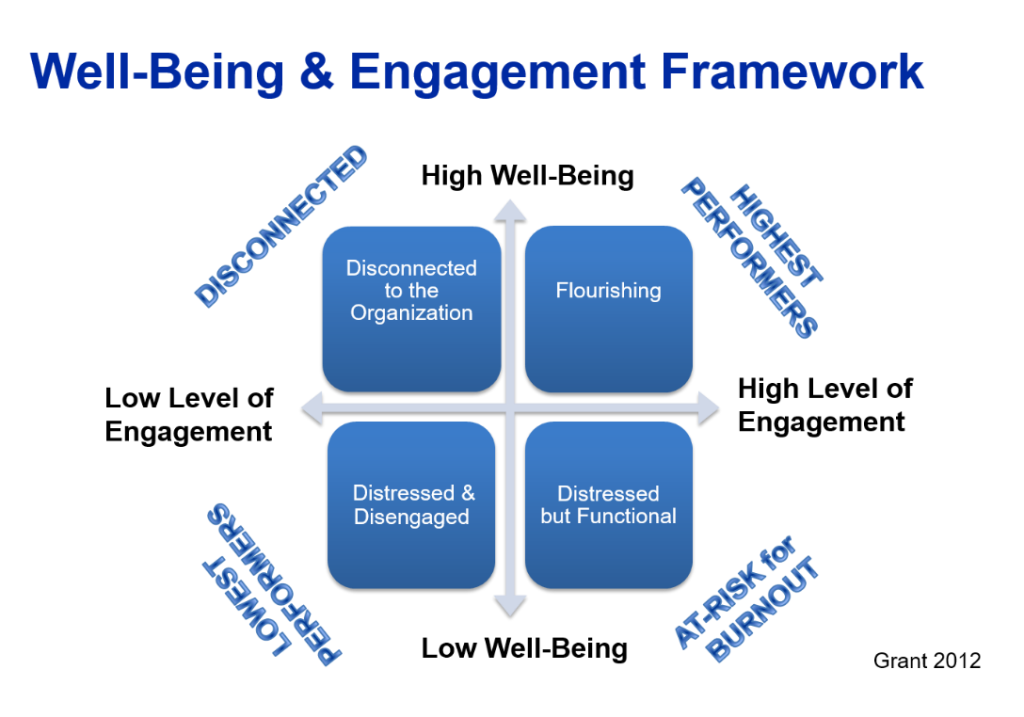As a strategy consultant for Mayo Clinic, Jennifer Flynn is focused on Mayo’s mission to improve the health and well-being of individuals as well as the larger population. The question she is often faced with, though, is what comes first: healthy employees being more engaged in their work or engaged employees being healthier? In a recent Wednesday Webinar with HERO, we talked with Flynn about just this. It’s a question that Flynn often compares to the chicken or the egg, and instead asserts that it is the chicken and the egg. Engagement and well-being don’t function separately, but rather, are intertwined.
[If you missed the webinar, HERO members can view the recording here.]
Flynn asked the audience to imagine a colleague named Mark who is 45 years old and travels a lot for work. His mother has multiple health conditions and Mark is her primary caretaker. He knows that he should eat better, be active, get enough rest and spend time with his family, but balancing his life is a challenge. Mark says that when he’s not busy, what really matters to him is his relationship with family.
In the health and well-being industry, we’re often focused on traditional areas such as workplace safety, absence of disease and physical activity but we can’t ignore Mark’s wants and needs such as fostering relationships. As we’ve come to better understand overall well-being, we’re seeing that paying attention to Mark’s health means paying attention to his well-being through a more holistic approach.
While businesses are commonly focused on improving performance and engagement attributes, they can often miss how connected these attributes are to employee well-being. Why does a chicken cross the road? Just consider how many chicken and egg scenarios the Marks’ of a workplace experience to get to the high performance side: If Mark isn’t engaged in his work and the company is providing health resources, he’s probably isn’t engaged with those resources either. But, if Mark is engaged in his work, he’s more likely to be aware of their company’s health programs and engage in those as well. Similarly, if Mark is someone who is engaged in improving his health and sees that his organization provides health programs, he will likely participate in the programs. And as we know, participating in wellness programs improves well-being, which in turn increases engagement and performance. The Marks’ of any company are more invested in a company that provides programs that are important to them, again increasing engagement.
The research in this area tells us that these are interrelated concepts. According to Flynn, engagement influences well-being as much as well-being influences engagement. However, when we asked our webinar audience how confident they were that their organization’s leaders fully appreciate the connections between well-being, employee engagement and high performance, the responses were quite varied. 9% reported they were very confident that their organization’s leaders appreciate the connections, while 35% said they were somewhat confident, 21% said they were not sure, and 35% said they were not very confident. To Flynn, these poll results demonstrate how much opportunity there is for improvement.

Flynn then pointed our audience towards the above graphic, illustrating that the goal for organizations should be to see their employees in the upper-right quadrant with the highest performers. Given what the research tells us about well-being and engagement being so interrelated, we should continue to push towards increasing well-being for individuals, but also to help build an organization aimed at higher levels of employee engagement. We want people to bring their best selves to work, but we also must provide the environment that allows them to excel. For as Flynn tells us, it’s not about the ‘chicken or the egg.’ Engagement and well-being happen simultaneously and each depends on the other for success.
